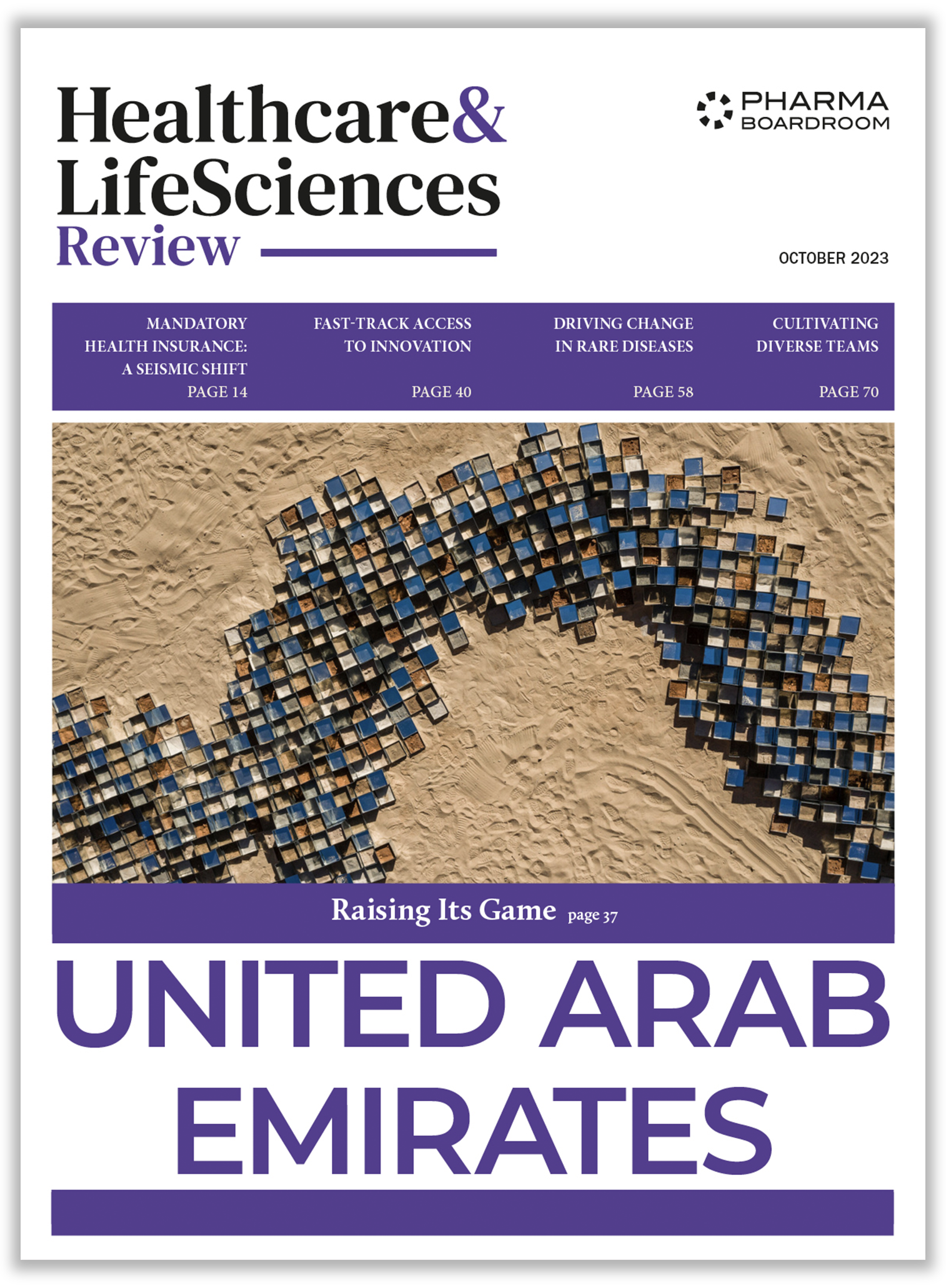While universal health insurance is the talk of the town in Egypt today, private healthcare groups – serving up to 40 percent of the population in both the insurance and out-of-pocket markets – still have an important role to play. This role covers both providing high quality care to their existing patients as well as supporting the government’s wide-ranging healthcare transformation program.
In what is a complex and sometimes challenging market, local private hospital groups dominate. One such organisation is Cleopatra Hospitals Group, which started life via the outright acquisition of four hospitals before floating on the Egyptian stock market in June 2016. The Group has been acquiring both greenfield and brownfield sites since 2018 and now has six fully operational hospitals, three polyclinics, an IVF centre, as well as a rehabilitation and physiotherapy facility. In total, Cleopatra oversees 1,200 beds across all its facilities. Similarly dominant is Alameda Healthcare, which boasts approximately 1,000 beds across 128 clinics, four hospitals, a home healthcare brand, and eight centres of excellence.
Fighting Fragmentation
Both Alameda and Cleopatra aim to use their scale and expertise to improve the level of care being provided in Egypt; a country noted for the high level of fragmentation in its healthcare system. As Alameda CEO Neeraj Mishra explains, “Out of the 130,000 beds in the country, private healthcare accounts for roughly 35,000, out of which about 17,000 or 18,000 are in greater Cairo. Even among the 35,000 beds in the private sector, a maximum of 4,000 are maintained by organised players with an international level of care such as Alameda.”
Even among the 35,000 beds in the private sector, a maximum of 4,000 are maintained by organised players with an international level of care such as Alameda
CEO of Cleopatra Hospitals Group Ahmed Ezz El-Din agrees, adding that “The hospital business in Egypt is extremely fragmented, with only a few hospitals having over 100 beds and most institutions owned by an individual doctor and their family or a group of doctors.”
For Ezz El-Din, this fragmented landscape presented an opportunity for a Group to take a more holistic and professional approach. Drawing on his own experience in the pharma and medtech industries, he explains that “Cleopatra took a different route [to existing hospital groups in Egypt], with a matrix organisation as seen within pharma companies, a CEO (myself) with extensive industry experience, and a very strong board of directors. Moreover, the Group has developed robust systems in IT, human resources, supply chain, procurement, digital transformation, and revenue cycle management. All our department heads have clear KPIs and SOPs, and Cleopatra stands head and shoulders above the regional competition as the only fully-fledged corporate hospital system.”
He goes on, “Doctors are not trained in the management of a business; rather in how to consult and conduct surgical procedures. We therefore allow doctors to get on with their jobs through providing them with the latest technology and systems while we as a management team look after all other functions, from HR to finance, government interactions, approvals, and acquisitions.”
Strong Fundamentals
Noting Egypt’s strong healthcare fundamentals, Ezz El-Din cautions that “Egypt is a very attractive investment destination in terms of hospitals, if the right management can be found. Every year, 2.5 million children are born in the country, life expectancy is increasing, as is the need for chronic disease therapies. In essence, Egypt has some of the characteristics of both developing and developed countries, and – with the right business model – hospitals can generate high double-digital growth in both revenues and profits.”

Egypt has some of the characteristics of both developing and developed countries, and – with the right business model – hospitals can generate high double-digital growth in both revenues and profits
Ahmed Ezz El-Din, Cleopatra Hospitals Group
Mishra agrees that Egyptian private healthcare is a booming market. While Alameda’s scale allows it to bring in the pharmaceuticals and personnel it needs, he does warn that collaborations with leading international innovators are vital to securing medical devices and consumables.
“Over the last year and a half, we noticed that the overall supply chain in Egypt is becoming slightly difficult because of devaluation, currency issues, and availability of supplies,” states Mishra. “Therefore, we started moving in the direction of developing strategic partnerships with the likes of Siemens, Medtronic, Roche, and others. We will have long-term partnerships with select players who will provide us not only with better technology but also better pricing.”
International Incomers?
Based on these strong fundamentals, might we see an influx of new international investors in Egyptian healthcare, threatening the status of players like Cleopatra and Alameda? Both Ezz El-Din and Mishra believe this could happen, but are sanguine on its potential negative impact on their businesses
“We never fear competition because this competition would be for the benefit of patients. Additionally, Egypt remains a country of over 100 million patients, meaning that there is room for more actors,” states Ezz El-Din.
Mishra complements, “Actually, having more players coming to Egypt will be beneficial because of how fragmented the industry is. With the current individual doctor-driven model there is a lack of consistency across the industry. At this point, even hospitals without international standards are still competing with us. It would be very encouraging to see some larger providers come because they would push the current market towards being more regulated and set higher standards of care.”
A Win-Win Model for HCPs
One quirk of Egyptian private healthcare is that healthcare professionals can split their time between private practice and other work. “Egypt has a unique model as most of the doctors are working in universities but not full-time,” expands Mishra. “They are professors and lecturers in the universities and then in their free time, they’re allowed to do private practice.”
He continues, “Therefore, the model is more of a fee-for-service, consultant model, but to ensure that patient care doesn’t suffer, we have specialists in areas across the board that will be available inside the hospital 24/7. This model is economical because we are not committing to a fixed cost and the doctor will be only paid when they perform a procedure or a consultation. This is basically productivity-based payment.
Ezz El-Din adds, “Our model works because it offers a win-win agreement with consultants, who can maintain their names, images, and income. We give them the volume but also allow them to go into their universities and even private clinics, if applicable. Patients cannot be taken from the Group and treated elsewhere, unless we are unable to provide the service ourselves. In these cases, we transfer the patient at our cost using our ambulances.”
UHI – Opportunity or Threat?
While Egypt’s push to bring the country’s entire 100 million-plus population under some form of public health insurance for the first time might seem to be a threat for private healthcare providers, both Ezz El-Din and Mishra are keen to play up their organisations’ important roles in this generational transformation.
“Cleopatra Group one of the health insurance program’s main supporters,” proclaims Ezz El-Din. “We have invested heavily on aligning with the offices of the Prime Minister and Minister of Health, using our hospitals in Port Said and training up over 1,000 medical and non-medical employees.”
Mishra tells a similar tale. “When universal healthcare started in the country it was a new initiative by the government, so they actually came to us private players for help. They utilised private hospitals for training – helping them to understand the health pathways – and we served as a model for implementing the universal health insurance scheme in their hospitals.”
He adds, “For example, in Port Said you will find three public hospitals with our logos because we were given access to the hospitals to support the training of residents and even working with management inside the hospital to make the model efficient and viable for the government. As you can see, the private sector has been collaborating with the Ministry of Health and universal health insurance from the very start.”
Promising Prospects
Ezz El-Din is also positive about universal health insurance’s impact on his country moving forward, and the role his Group can play in implementing it. “As an Egyptian, I can freely admit that we have many poor people that really need the attention, making universal health insurance a net positive for the country. As a company, we are very supportive of the initiative and are trying to jump on the opportunity via partnerships in areas including the private management of governmental hospitals.”
“Additionally, we have created a new franchise of the Cleopatra group called Access Healthcare. This project focuses on the hospitals under the universal health insurance program and aims to help the vast majority of patients with a convenient price level to land on a win-win agreement between us and the government.”
Mishra is similarly optimistic. “The next phase of consideration is how to offer universal health insurance care for patients in our hospitals. The plan of the government is to cover the whole country by 2032. By then, I believe this model will be well tested and the ongoing dialogue between private players and universal health insurance teams will result in the right pricing. Right now, the price point of universal coverage is not what we generally charge compared to the normal insurance model, but we believe it will be very well compensated by volume.”
“The opportunity is huge for the government to bring in a universal health insurance scheme. As the private industry, we need to participate in helping make healthcare organised and set a class of standards. Then the pricing mechanisms will be very easy to determine on a basis of the level of clinical care and technology a hospital is providing.”



